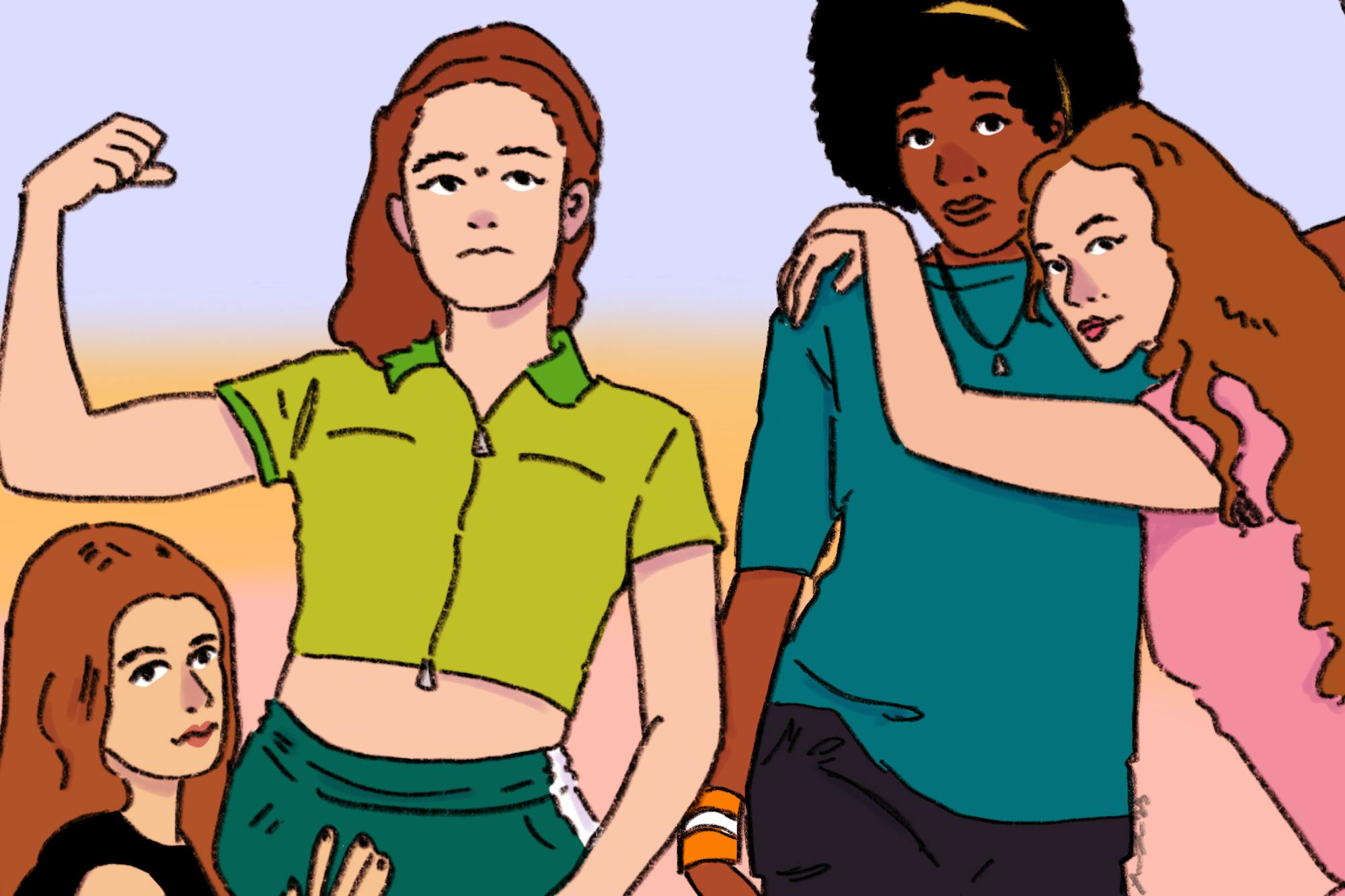The movie “Bottoms” was released in theaters on Aug. 25, but has since generated an uproar of commentary — and it’s easy to see why. The movie, made by the producers of “Cocaine Bear” and “Pitch Perfect,” does not fit accurately into one genre, and consists of characters and storylines that are underdeveloped. While this movie teases at the promise of portraying a believable lesbian relationship with a compelling storyline, “Bottoms” remains, aptly, at the bottom of my watch list.
“Bottoms” tells the story of two high-school lesbians — PJ, played by Rachel Sennott, and Josie, played by Ayo Edebiri — who go to outrageous lengths in order to lose their virginity, including forming a self-defense club that goes completely awry. When the friends learn of the violent intentions of a rival football team at an upcoming game, PJ and Josie are tasked with assembling the defense club in order to protect their school’s football team.
When I read this storyline, I, like other viewers, expected a lighthearted coming-of-age film that focused on the challenges of navigating high school romance. But when I watched the film, I could not have been more wrong. The movie begins with scenes of slapstick comedy, “camp” dialogue and an over-the-top, melodramatic acting style that initially aligned with most viewer’s expectations going into the film. However, as the film progresses, both the storyline and humor get progressively — and inexplicably — darker. What begins as a typical high school rom-com turns into a movie that features scenes of unmotivated gore and violence. This random shift overtakes the focus of the film, and PJ and Josie’s quest for romance gets lost in the background.
What remains is a film that tries to combine some of the most successful elements of the producer’s other films,“Cocaine Bear” and “Pitch Perfect.”
Though the main storyline of “Bottoms” warrants no obvious reason for the displays of gore, there is a similarity between displays of violence in “Bottoms” and those in “Cocaine Bear.” This led me to believe that the successful implementation of blood and carnage in “Cocaine Bear” might be the motivation for its inclusion in “Bottoms.” Although its inclusion in “Cocaine Bear” is humorous in the context of a movie trying to capture the essence of cheesy 1980’s horror, this technique did not translate well to a film about present-day lesbian high school romance. Rather, the depiction of violence in “Bottoms” comes across as shocking and unsettling. The film’s insistence on blood and gore creates confusion as to why there are so many scenes of brutality that detract from the film’s romance. The choice to employ this technique in “Bottoms” without regard to its storyline or genre diverts the attention away from the portrayal of queer relationships, which is the very reason why most viewers were initially drawn to the movie.
The film also misses the mark on the relationship front. Preoccupied with a tasteless depiction of gore, the story leaves the high school duo and their love interests severely undeveloped. Instead, what results is a fast-tracked portrayal of emotional intimacy hardly in line with how other films have successfully portrayed lesbian relationships. In much-loved movies like “Portrait of a Lady on Fire” and “Vita and Virginia,” there is great emphasis placed on the emotional connection between the protagonists and their love interests. Depictions of lesbian relationships can even overdo this emphasis for comedic effect, such as in Saturday Night Live’s hilarious “Totino’s commercial” skit starring Kristen Stewart. In these sketches, the humor relies on the understanding that lesbian women are often portrayed as requiring a deep emotional connection as a prerequisite for romance. But “Bottoms” remained entirely oblivious to this well-known phenomenon. Its failure to devote an adequate amount of time developing the emotional intimacy of the protagonists and their love interests leaves viewers feeling unconvinced of the realism of the romance in the film, especially to audiences familiar with the canon of lesbian films and comedy sketches.
Not only does the film deprive the audience of believable romantic relationships, but it also leaves its supporting characters undeveloped. In other movies that highlight all-female group activities, such as the acapella group the Barden Bellas in the beloved “Pitch Perfect” movies, each character of the group is distinguished in some memorable way. Even if a character’s unique traits are trivial to the progression of the movie’s plot, the inclusion of a distinguishing trait makes the characters, and the movie as a whole, more compelling. “Pitch Perfect” fans remember the supporting characters that made the acapella group feel like a whole: uptight group leader Aubrey, the masculine-presenting lesbian Cynthia Rose and the quiet, demure Lilly. These characters are of utmost importance in making the film come alive in the hearts and minds of viewers, even if the plot focuses on the more-developed protagonist, Becca. However, “Bottoms” did not even try to create a believable storyworld. Throughout the movie, the viewer knows next to nothing about the other members of the self-defense group, except for Hazel. But even though Hazel is an important addition to the plot of the movie, the script writers subject Hazel’s character to unrelenting physical and emotional suffering, without reprieve, throughout the movie.
The hodgepodge of elements, ideas and storylines that resulted in “Bottoms” felt unfinished and unfocused. It attempted to cherry-pick the most successful techniques from other films, but this was done without regard to how the elements might work together as a whole. Instead, the film would have been more successful if it had deferred to well-known conventions in the existing collection of lesbian media. “Bottoms” is certainly a spectacle of a movie that will leave some audiences entertained and others, like me, feeling thoroughly confused.
Rating: ★★☆☆☆




